My “reliable” gardening calendar for Southern California says to plant your first tomatoes after March 15. So why are these already in the ground in my garden, planted February 29?
How early can you plant your first tomatoes?
Do you realize how dry it has been the last couple months? Usually January and February are our wettest months of the year, but the National Weather Service says that throughout Southern California they were among the top ten driest for those months on record. (Luckily we got lots of rain in November and December.)
Dry soil is warm soil. Soil that has warmed earlier than usual can be planted to tomatoes earlier than usual.
After March 15 is a sure bet for when to plant tomatoes in most of Southern California, but — as my gardening calendar also notes — plants grow according to the environmental conditions, not the calendar.
(Keep an eye on the weather if planting around mid-March, as it can still get colder than tomatoes like in some parts of Southern California. See my post, “I planted tomatoes too early.”)
Protecting early tomato plants
When I say sure bet, I’m talking about when you can plant tomatoes that will immediately grow well, in the ground, out in the yard, on their own without protection. Farmer Roy plants his first tomatoes in January every year, but he also keeps them covered with frost blankets, which protect the plants on cold nights and also warm them during the day. Still, he loses some of those early plants to the cold each year, as he farms in Poway, an inland valley.
(Who’s Farmer Roy? Read my post about him here.)
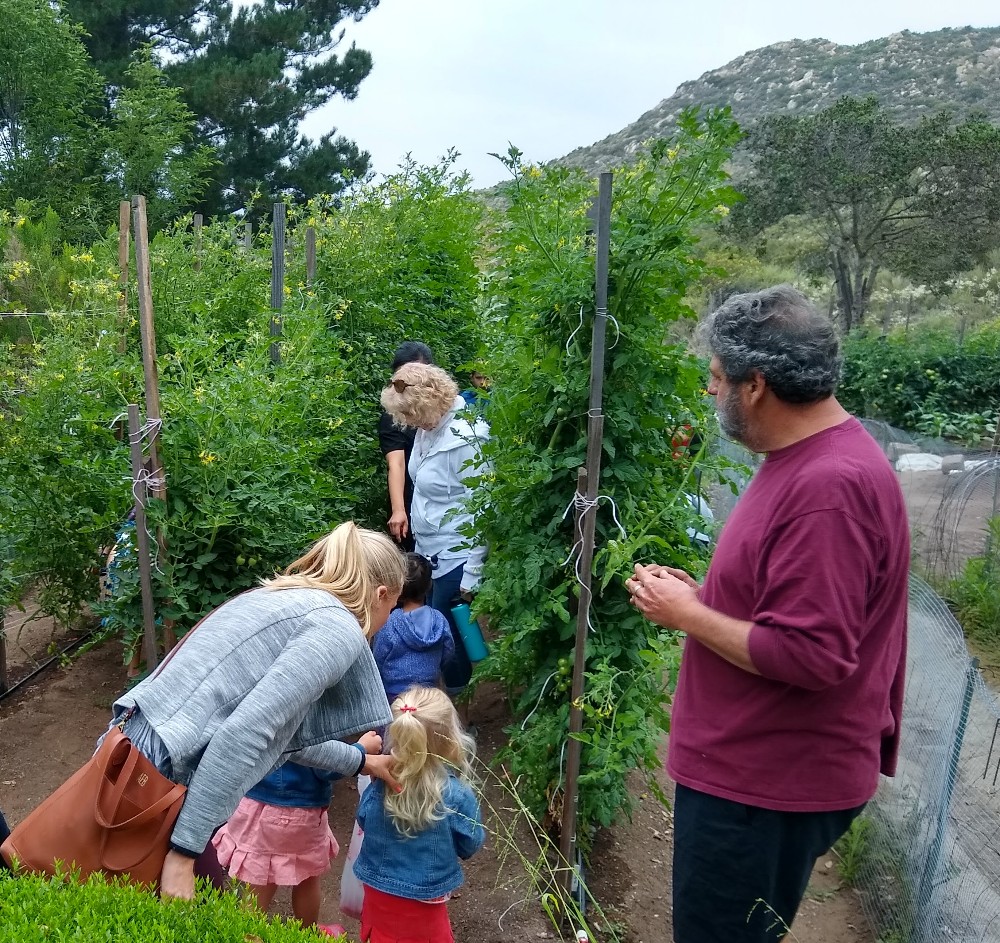
Overwintering tomato plants
What about those old plants that last through the winter? Do you have any of those? Here in Southern California in many locations and in some winters, our tomato plants don’t get killed by the cold so they just keep growing unless pests or diseases get the best of them.
My previous yard near San Diego’s Balboa Park never saw frost and my tomatoes were never killed by winter cold. In my current yard, which is farther inland and colder on winter nights, tomato plants usually get killed by cold at some point during winter, but not every year. This year, that point was December 19 (2019) for this tomato plant:
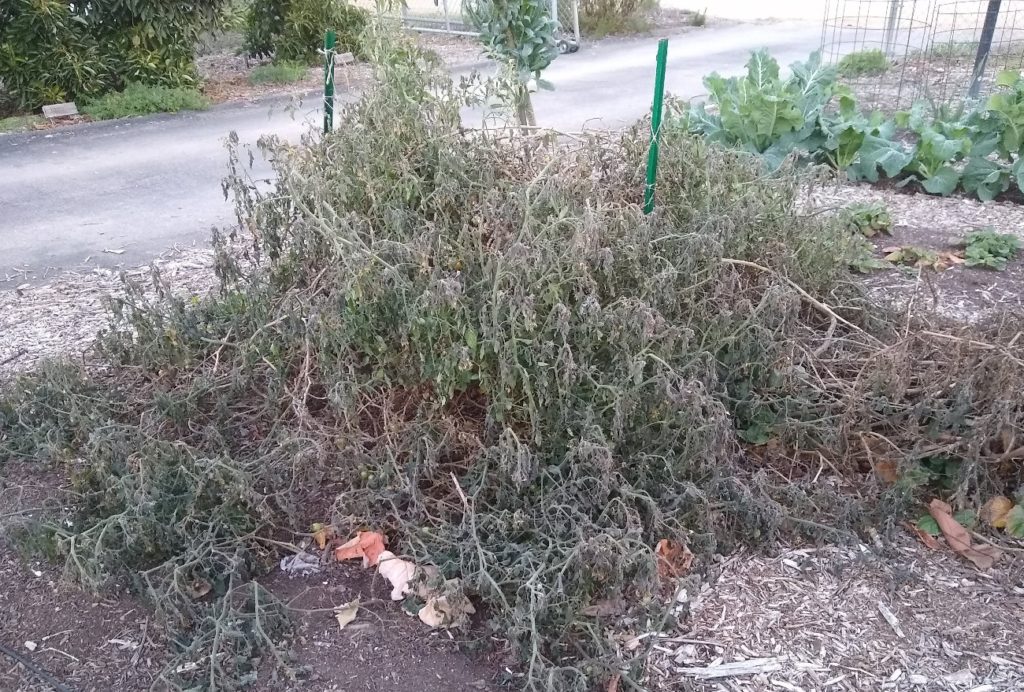
But here is a tomato plant at a school garden in San Diego that was still thriving on January 23:
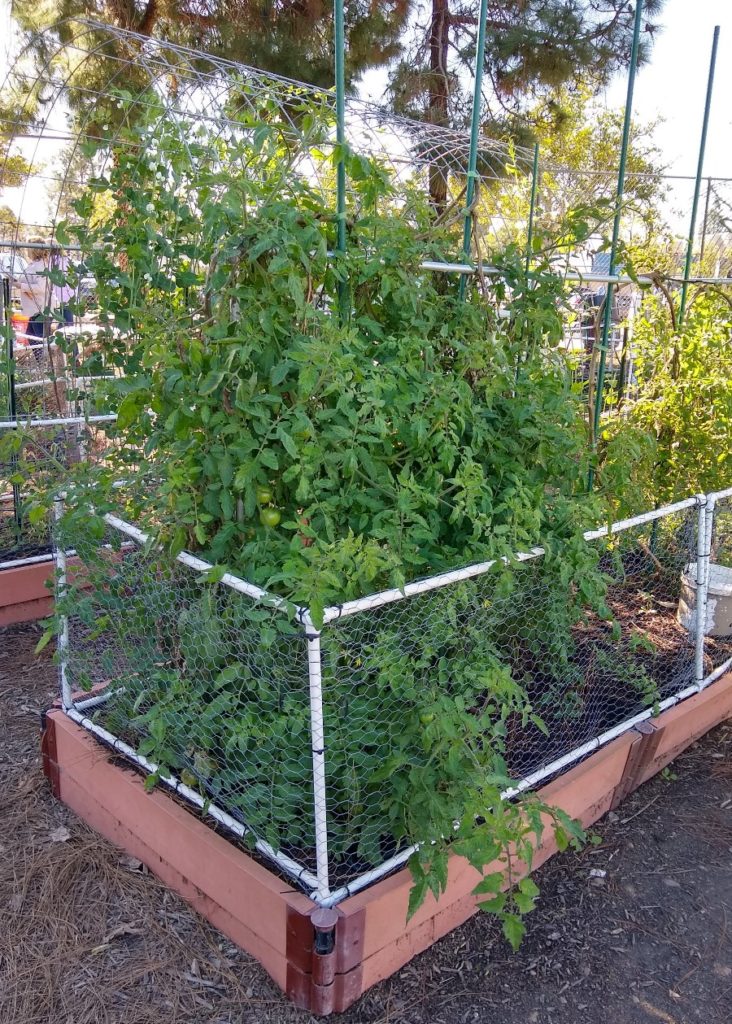
And a friend whose garden is on a warm, south-facing hillside kept this sprawling and healthy tomato plant going through this winter:
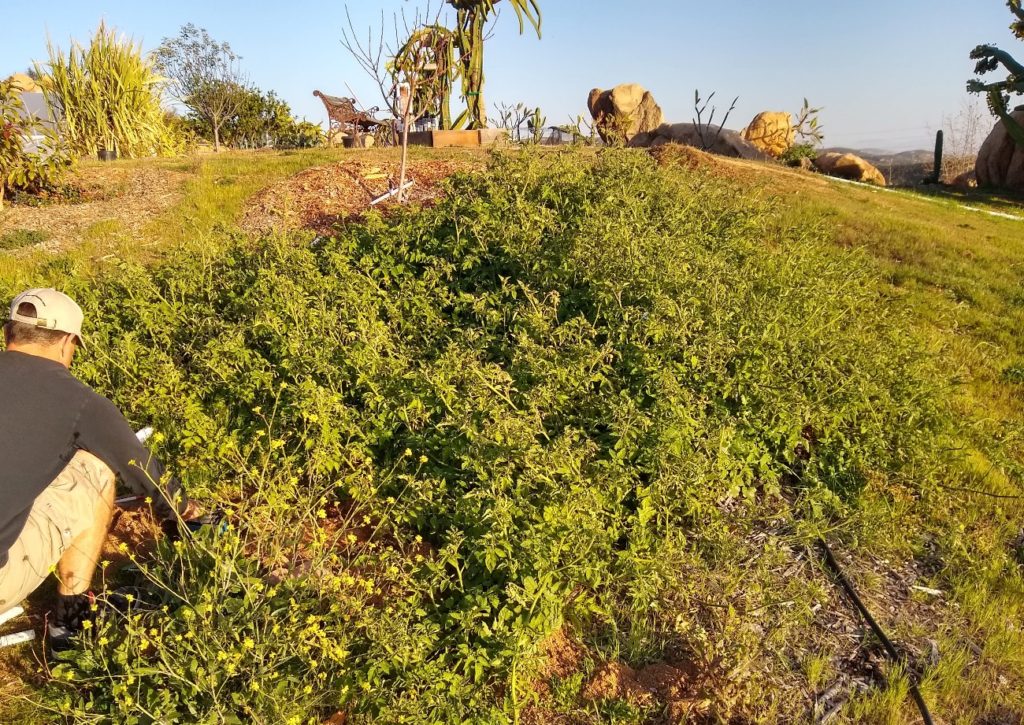
So for locations like these that rarely see frost, should tomatoes be planted any day of the year? And should those tomatoes be kept growing into a second or third year? Maybe.
Even where there is no frost in Southern California, the winter is still chilly enough such that tomato plants grow slowly that time of year, and the fruit matures very slowly and doesn’t taste as flavorful as in the warmer seasons. But if you don’t mind that, then go for it.
My friend in the photo above recently removed that tomato plant. He just didn’t like that it was so big and taking up so much space.
I usually remove most of my tomato plants during winter even if the weather doesn’t kill them for me because I’ve found that second-year tomato plants usually don’t produce as well as new, first-year plants.
How late can you plant your last tomatoes?
Now on the other end of the season, should we keep planting tomatoes into the summer? Farmer Roy plants new tomatoes roughly every month starting in January and ending in late June or early July. My own rule of thumb is to get my last tomatoes in by the Fourth of July.
And I usually plant two rounds: one early and one late.
This late planting of tomatoes will provide fruit in the fall. Often, some of the tomato plants put in early burn out in the heat of mid-summer (they’re already almost six months old).
But the late plants are young and vigorous through the heat of July and August, and they usually start fruiting in early fall. It is often from these late plants that you’ll harvest tomatoes at the same time you’re harvesting your first heads of broccoli.
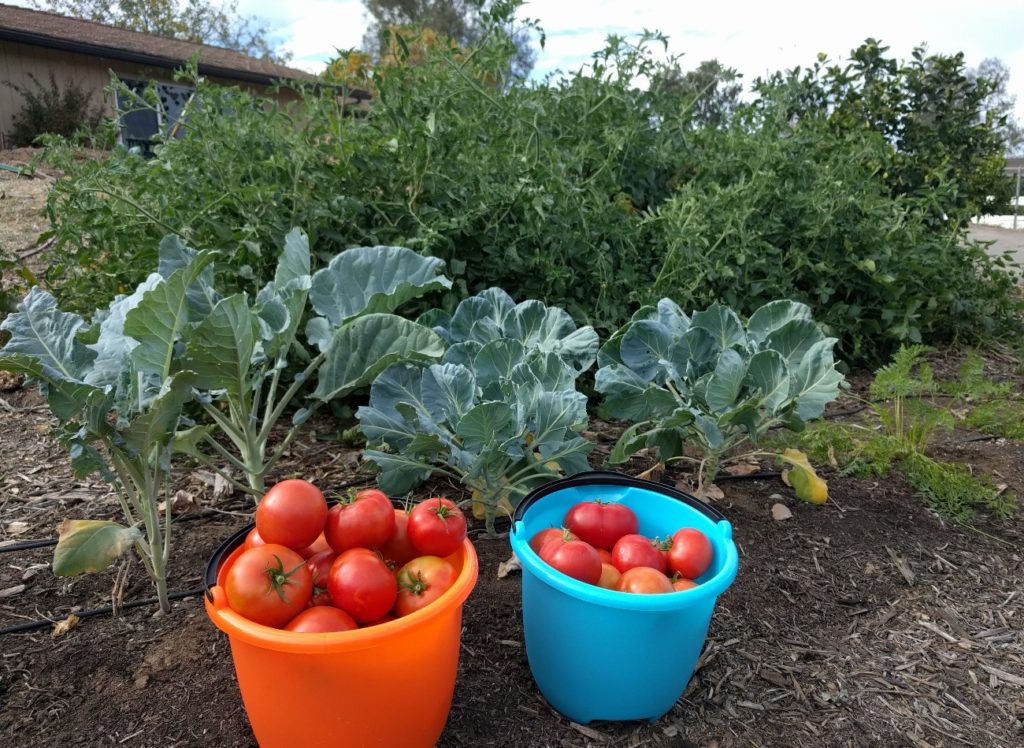
Why not plant tomatoes later than the Fourth of July? In most years, the weather will cool too much and the day length becomes too short in the late fall such that if you plant in late summer you’ll get few tomatoes out of the plant. In other words, go ahead and plant tomatoes after the Fourth of July but don’t count on getting a big harvest.
Or a harvest with maximum flavor. I’ve always found that tomatoes that mature after about Thanksgiving don’t have as much flavor as those that mature in summer and early fall. The possible exception is cherry tomatoes, which don’t seem to need as much heat to taste sweet. We were still eating tasty tomatoes from a Sungold plant after Christmas this winter.
Which types to plant when
The smaller the tomato, the less heat and sunlight and time are required for maturity.
For this reason, I always try to plant at least one cherry tomato with my early round and my late round. With the early planting, a cherry will give you tomatoes to eat earlier than big types. With the late planting, a cherry will give you tomatoes to eat farther into winter.
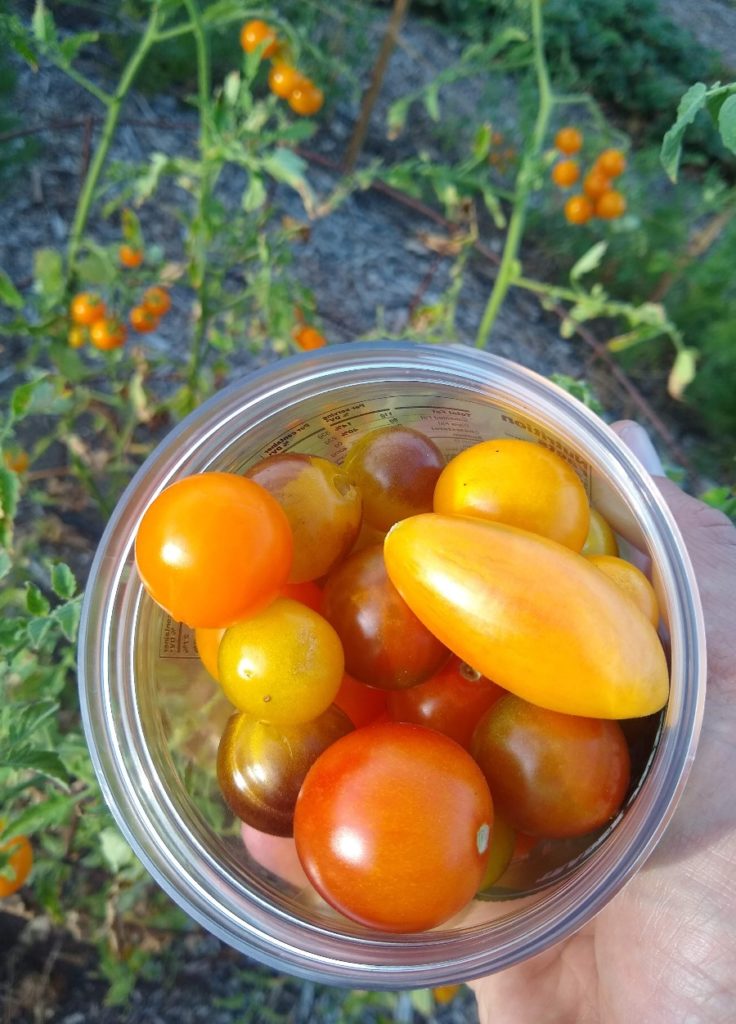
Take-aways:
-Generally safe to plant tomatoes in Southern California between March 15 and Fourth of July
-If sowing seeds, start 1-2 months earlier than planting dates (that means as early as January, but start those indoors or in a greenhouse, not in the garden ground)
My other tomato posts:
“I planted tomatoes too early”
“‘San Diego’ tomatoes and supporting tomatoes”
“The best way to support tomato plants”
“Tomato varieties for Southern California, 2019.”
A list of all Yard Posts is here.

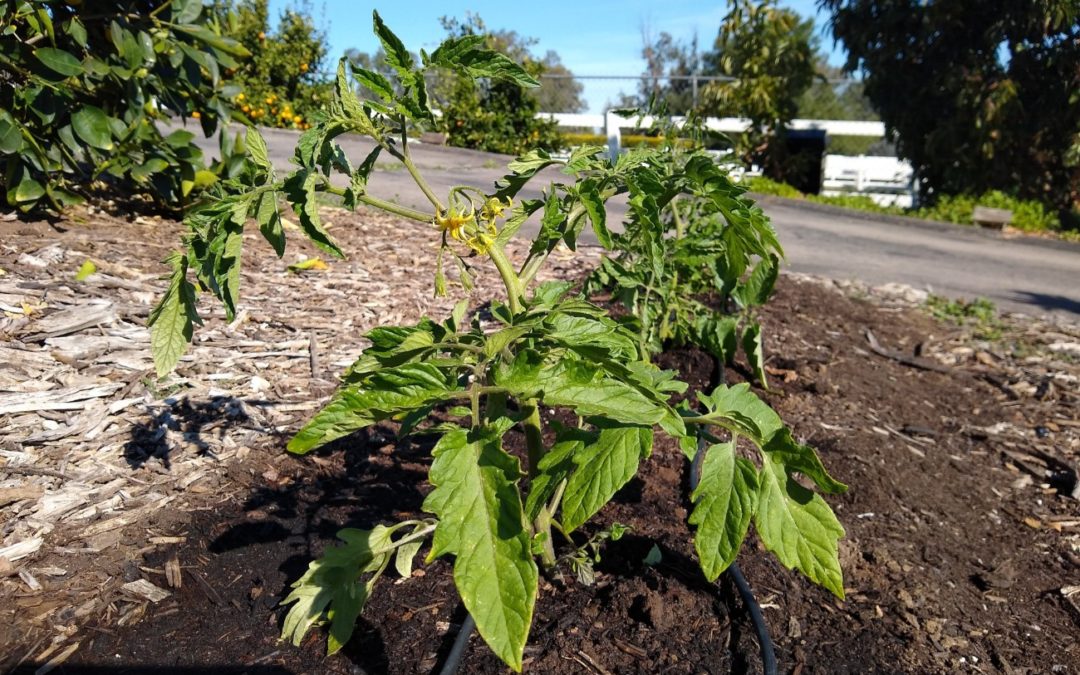


I tend to sow a bunch of seeds around valentines or Presidents’ Day. That keeps us in tomatoes until October. After that, cherry tomatoes last the longest. We had a few volunteers in January so I transplanted one to a south facing wall. It’s about two feet now and will probably be our first tomato this year.
Hi Bob,
Volunteer tomatoes amaze and mystify me. They’re always so tough and vigorous. And I’ve learned from them that soil and air temperatures don’t need to be as warm for tomatoes as for other summer crops like peppers; tomatoes germinate in the middle of winter often for me too, as yours did.
Hi Greg – Love your website. We have grown tomatoes over the years but always wanted to get into more veggies and finally decided to earlier this year. Thanks for all the wonderful info on the site! I had 2 questions for you if you get a chance to respond.
1) We are in Irvine (zones 10a and 10b). I was wondering if you had any general advice for us as we use the ideas on your site. Should we start things sooner? Later? Etc. I know this is a very generic question so I understand if there isn’t a clear answer. Would appreciate any thoughts you have though.
2) Tomatoes (and other veggies) – I’ve usually bought tomato seedlings but this year I direct sowed some tomatoes (and peppers, scallions, basil, spinach, lettuce 🙂 – so far!). I was wondering if you have advice on how much natural sun/heat is OK for tomato seedlings and other seedlings as well. We have raised beds with raised bed organic soil. We are misting/sprinkling the seedlings with a light “shower” daily and making sure that the soil stays moist. Do we need to also protect these from the heat in any way? Most of my veggies mentioned above have sprouted now so my challenge is going to be to keep them alive now 🙂
Thanks so much for any advice you can give us.
Best!
MB
Hi MB,
Thanks. Number 1 is a very smart question to ask. Compared to my yard specifically, Irvine is a bit warmer in winter and a few degrees cooler in summer — just a little less extreme on either end. As for planting dates, adjustments will be miniscule. The main things that you will find different are the worries about summer heat (you need to worry less about peppers or tomatoes getting sunburned), and winter cold (you will rarely get a cold night in December that zaps your potatoes). But I can’t think of any significant differences otherwise.
Number 2 is also a very smart question. As soon as seeds emerge as seedlings you should give them maximum sun, unimpeded, all day. Just keep them watered. They will grow very fast. The only exception would be for during an extreme heat wave.
(The temperatures in the mid-90s we are experiencing right now are not extreme. I’ve got all of my seedlings in full sun all day, except when I’m not around in the afternoon and can’t keep them watered. Then I shade them just for that period.)
One last note: Lettuce can be different. Lettuce doesn’t like to grow in inland Southern California from about now (May) through October. You can make it happen, but you have to coddle the lettuce by giving it lots of water or ample water with some light shade, and choosing heat tolerant varieties helps as well. Lettuce is much easier to grow from November through winter until about April.
Thank you so much for the reply! Appreciate it!
Hi Greg,
What type of tomatoes would you recommend for late planting in San Diego? Right now I have two containers (Earth Boxes) with 2 plants each (Better Boy, Cherokee Purple, Champion, and Husky Red) . They are loaded with fruit but still green. I would like to order some seeds to get them started in July for planting in August/September (is that too late?), when I predict that my current plants will be done making fruit.
My tomatoes need help! I planted starters, mostly early girls, one heirloom, five total, in early June. They never grew tall (only about two feet tall) and while they do have quite a few tomatoes, the few first that are turning a little past orange are soft (too soft in my opinion) and they are not even that normal red color yet like early girls should eventually be. I am out in Temecula so my first experience growing down here. They are in the ground and get a LOT of hot sun exposure. We are using some special pump food specifically for tomatoes, veggies, and herbs and water every morning. Any suggestions?
Hi Kathi,
Not sure what’s going on there, but I wouldn’t judge the plants firmly based on their first few fruit, which are often substandard. It’s possible that you have some sunscald happening. Do you notice that there are light colored areas especially on the top and west sides of the tomatoes?
Having planted those tomatoes late, you might find that your highest quality fruit matures around late September into October.
Hi there, my cherry tomato vine is already dying. It is south facing and I live in Burbank. It gets hot here during the day, and cold at night now. I watered and watered, but no luck. It’s a huge vine, and it’s dying. It was the very first tomato vine I ever planted and was quite proud of myself (even tho it didn’t seem to need me that much). I guess I just let it go? Any thoughts? Thank you.
Hi Robert,
You probably have no choice but to let it go this time of year. Old vines often succumb to various diseases late in the season (blight, wilt, nematodes); many of mine have too.
For this reason, I am in the routine of planting a second round of tomatoes. I try to get them in the ground in June, by the summer solstice. These young plants will start fruiting about the time that the first round (planted around March) vines decline. This has been a reliable way for me to have tomatoes coming out of the garden all the way until a cold winter night zaps them.
Hi Greg: last year was a poor tomato year for me. I planted in mid April (Oceanside, south facing) but it seems afternoon winds whipped them terribly. Have you ever heard of protecting young plants from wind or being damaged by wind? Thank you. P.S. I tried the Momotaro and loved them.
Hi Joseph,
I can’t say I’ve ever experienced or seen damage to tomato plants from wind except if the wind knocks the plant over and kinks the stem. You might try a different method of support this year or add the support earlier. Speaking of wind, I bet your yard is getting blasted right now with this storm! Mine sure is.
Greg: Thank you your reply. Yes last night and this morning we had 40+MPH gusts. 9-10 mailboxes blown away and one beautiful 4o’ palm toppled into my neighbors garage. Sad but luckily no injuries. I think I’ll keep my tomatoes sheltered longer until they’re a wee bit stronger. Thanks for all.
Hi Greg
You have come to my favorite subject of tomatoes. Since I have begun following your site, I have never heard any conversation about the Heirloom tomatoe and would encourage you to plant a few types and share your results with us. I think for starters: Cherokee Purple, Black Krim and Brandywine would be good to start with. It’s my feeling as an “EV owner, “That once our members see and taste these fabulous tomatoes, they will never go back to regular gas again”. OMG I said it. I am hoping other members who have planted these Heirlooms will share their experience with us.
I try and start cuttings of my best tomatoes in late fall and winter in my small greenhouse, putting them out in the early spring, depending upon weather. I’m in Fountain Valley (zone 22 or zone 10b depending upon which system you use.